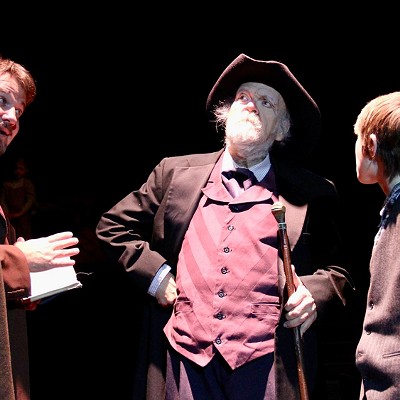Now, it’s a key element of the annual city budget debate, competing with other high-level interests such as public safety, trails and parks and better streets, and it has been included in the popular MAPS initiatives.
“It’s strange because people didn’t even know we had a transit system 12 to 15 years ago. Now, we’re in the discussion about budget priorities with public safety. That kind of debate would not have happened before,” Cain said.
Being at the forefront allowed COTPA to improve bus frequency levels to 30-minute intervals as opposed to the current frequency of an hour or longer. The switch will occur in mid-March, Cain said.
Also, COTPA will streamline by eliminating neighborhood stops in favor of routes on major streets. Still, a lot of work remains for OKC’s program, which is consistently underfunded. COTPA’s annual budget is an estimated $24 million, but that’s never enough for a city that offers bus service to nearly all of its 626 square miles.
“We’re in a better position today, but when you’re at the bottom — actually, we were at the bottom then and we’re still at the bottom,” when compared to cities of comparable size, Cain said.
Forward-thinking leadership
The longtime COTPA director made his comments during a recent interview that focused on his Feb. 20 retirement.
Future projects are left to a new administrator after Cain leaves. A national search is underway for his replacement.
“I turn 66 this year and I meet those magical retirement numbers,” he said. “I can afford to retire, and I’m in good health so far. I’m going to work on a long honey-do list and do some fixer-up projects that I’ve put on the back burner.”
Cain also wants to travel extensively after his wife retires next year.
Before he leaves, however, Cain has business to complete, including supervision of a Federal Transit Administration review of OKC’s public transit system, finalization of a new labor contract with the Amalgamated Transit Union and development of next year’s operating budget.
City Manager Jim Couch applauded Cain’s leadership.
“Rick’s innovative spirit and consensus-building leadership style helped us manage through some complex and challenging conditions,” he said.
Strengths and weaknesses
Cain acknowledged the city’s transportation shortcomings while promoting COTPA’s accomplishments.
“We poorly serve this city,” he said, referring to OKC’s large geographic area and the lack of buses. “The city can’t grow the system it wants solely out of the general fund. They must find a dedicated funding source for transit.”
His comment hits at the heart of an ongoing debate involving a potential regional transit system that could include buses, modern streetcars and light rail.
“How do we create this system?
How do we finance it? How is it governed? You have to have multiple partners who are paying for it,” he said.
Today, an estimated 90 percent of bus riders are transit dependent. They have no other transportation.
While the number of buses in the transit fleet hasn’t increased in the last decade, they are a bit newer, cleaner and more efficient.











